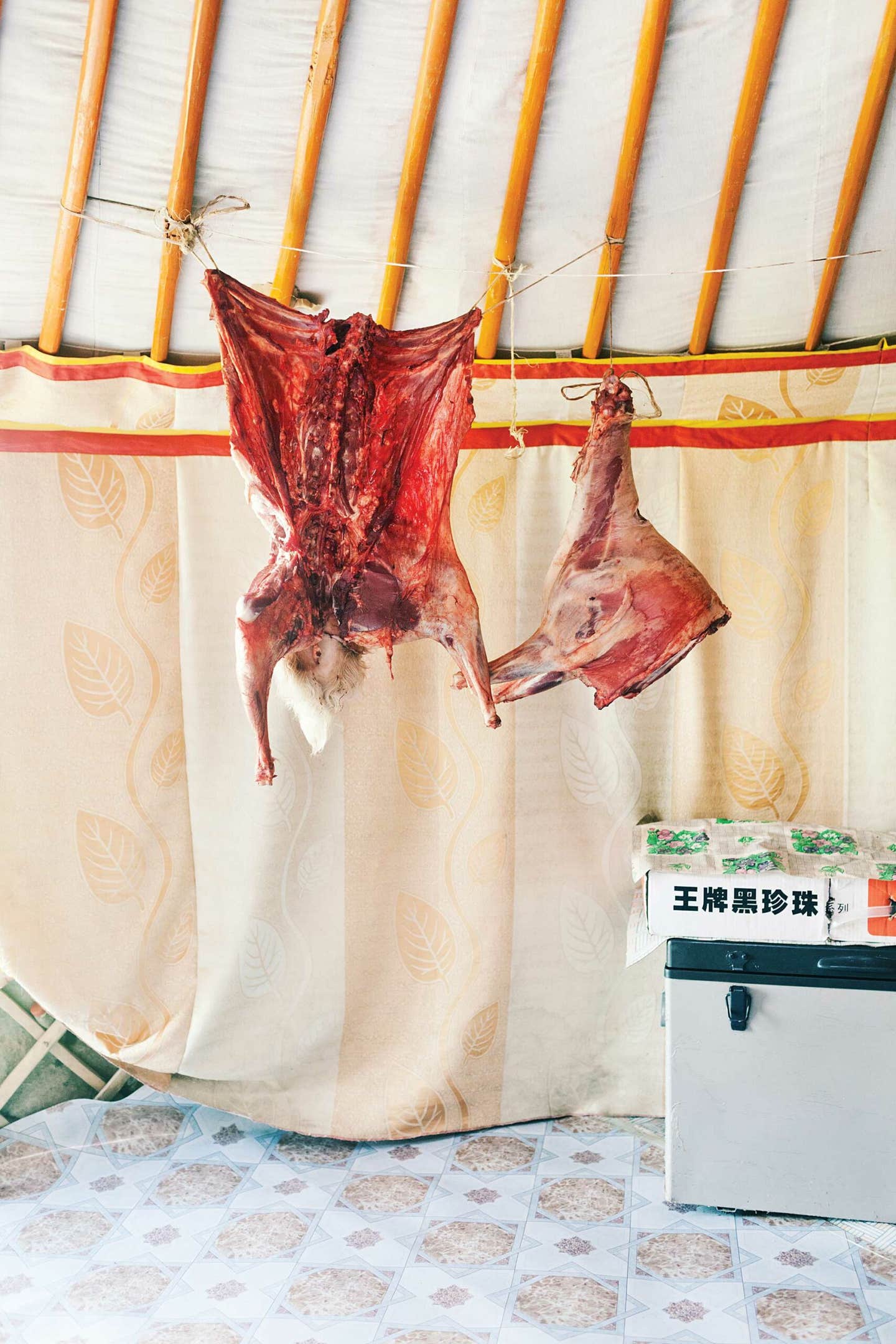
In Mongolia, Dinner Begins With a Whole Lamb and a Bottle of Vodka
Where we’re going, we don’t need roads
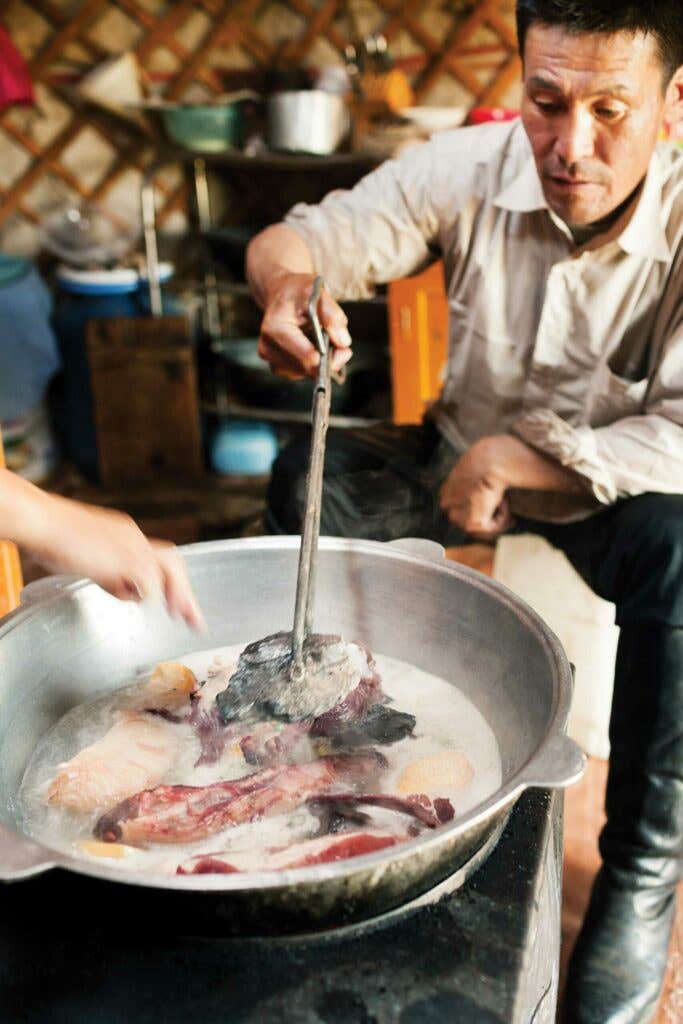
To make khorkhog, first gather stones from a river. Now set the stones over a bed of coals. When they're blazing hot, toss into a large cauldron and add the meat of one lamb, salt, potatoes, a little water, and some vodka.
The animal, butchered and killed that day in honor of our arrival, had hung to dry from the rafters of one of the gers (yurts) belonging to the Bayraa family of Mongolian nomads. The master tent where we would sleep was a wonderland of oilcloths, Soviet garb, and bright cacophonous Asian fabrics.
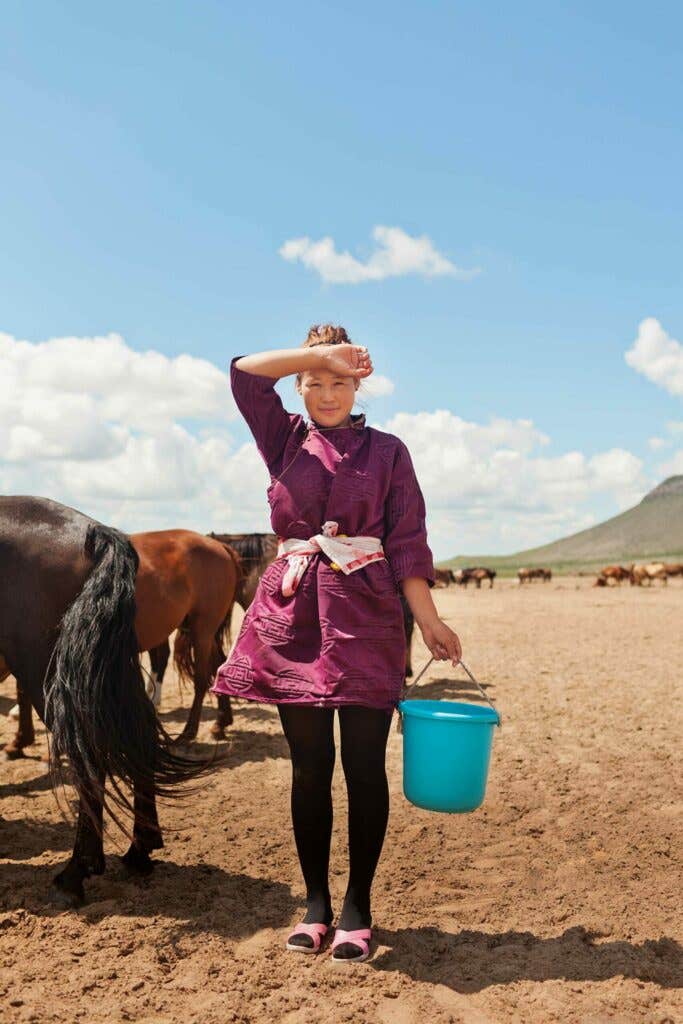
We'd set out from Ulaanbaatar, the capital city, with our driver and guide, Shatarbal Dugerjav, former diplomat to Bulgaria, and a single cassette tape of Mongolian folk music that sounded like horses whinnying and eagles screaming. At the city's edge, the roads stop and the tire tracks begin.
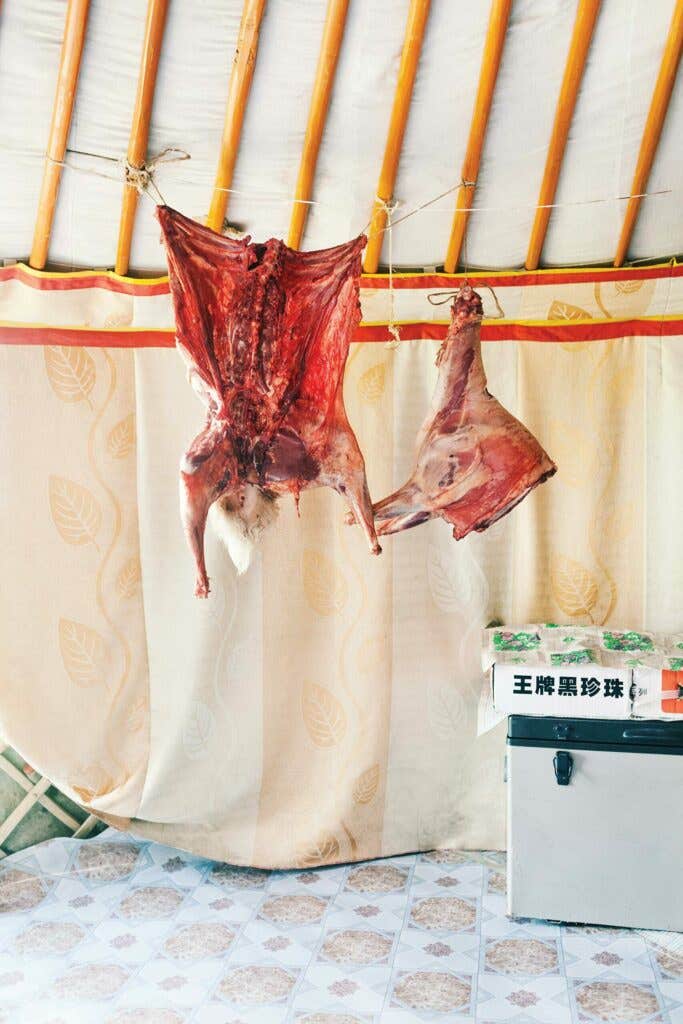
There are no road signs outside the capital. A guide leads by memory, intuition, and a thoughtful crawl of 15 miles per hour. You rarely see more than a one-story building between minuscule towns. But you do see Mongolian families packed three generations deep into Land Cruisers migrating through the countryside. Because many Mongolians living outside the capital are nomadic, they pay no rent or tax and the government encourages them to preserve this way of life.
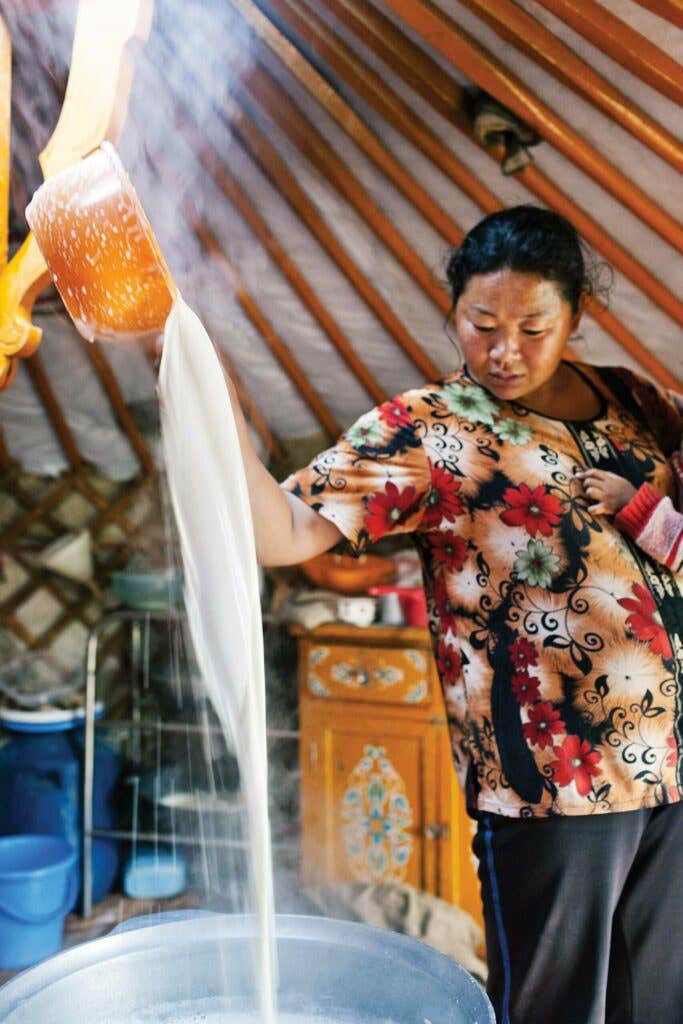
After days of driving we arrived at the Bayraa family camp in the Arkhangai region, 330 miles to the west of Ulaanbaatar. Along the way we ate instant Korean noodles and kimchi, both popular here. We saw horses on the flatlands, a vulture feasting on a fallen sheep, a double rainbow after a rainstorm. Beauty and brutality and, for long stretches of the drive, green pastures, blue sky, and nothing more.
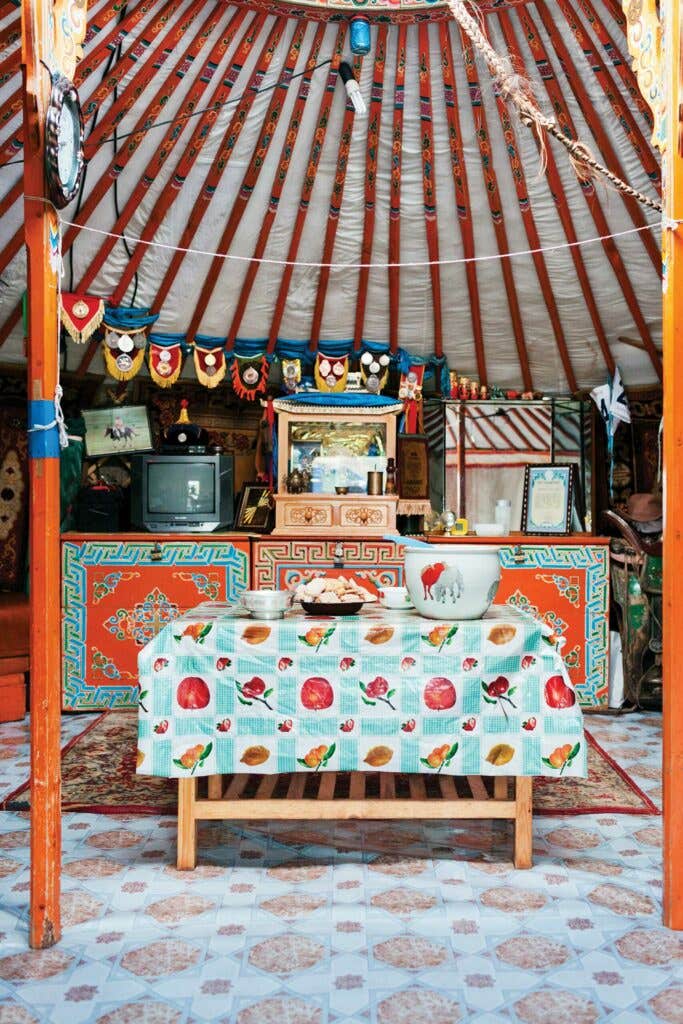
Inside the yurt, a woman cut handmade noodles on the bed. Three boys took us to collect rocks from the river. After we'sd gathered a couple dozen smooth stones, the boys' uncle set them over a bed of glowing hot coals to begin the khorkhog.
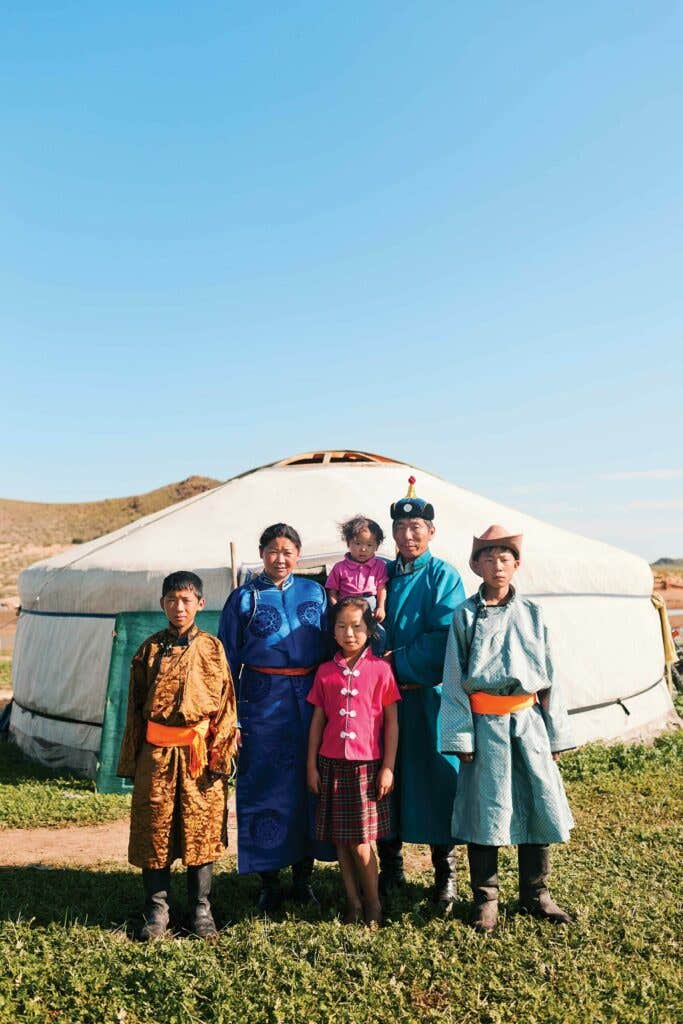
Once added to the pot, the river stones sizzled, searing the ribs and chops like little cast-iron skillets. Vodka and water were poured in, creating a giant puff of steam. Sealed with a lid weighted down with a wrench, the cauldron of rocks was put over fire, and in an hour, the steam was gone, the meat brown and tender.
We ate this offering with our hands, and after the last rib was picked clean, we drank vodka. The river stones, still warm and slick with lamb fat, were passed from host to guest, thawing chilly hands and feet as we sat, elbow to elbow, communing beneath that big Mongolian sky.
Keep Reading
Continue to Next Story










